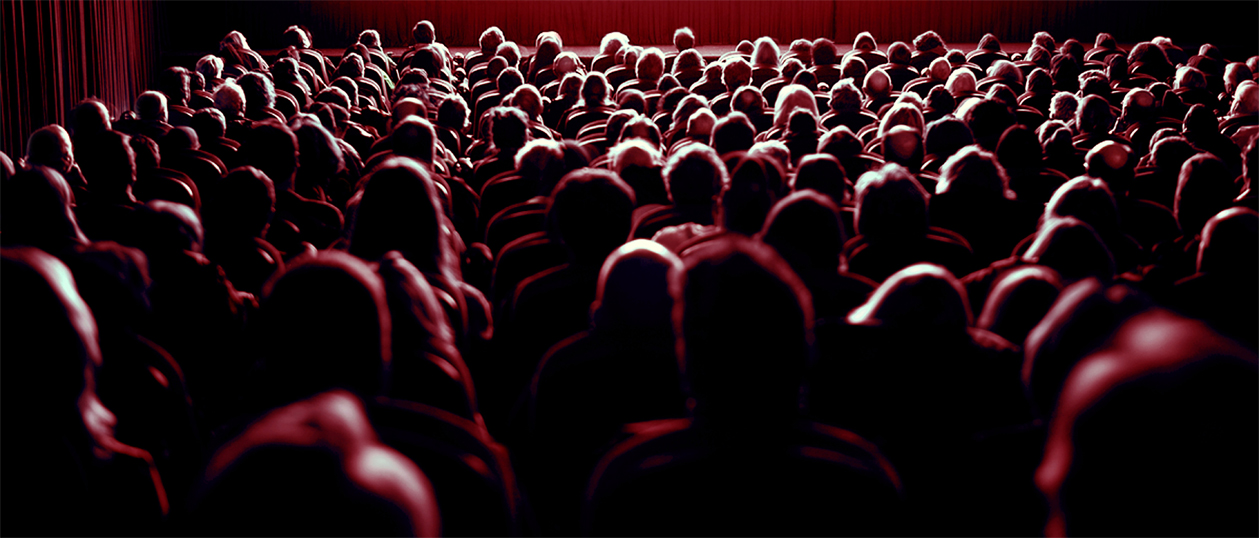Regards the way viewers make sense of the images on screen and the relationship we have with the films we watch.
Consider:
- How the spectator has been conceived both as ‘passive’ and
‘active’ in the act of film viewing - The possibility of preferred, negotiated, oppositional and aberrant ‘readings’ of film
- Reasons for the uniformity or diversity of response by different spectators
- How spectators’ responses are affected by social and cultural factors
- How the spectator is in dynamic interaction with film narrative and film features designed to generate response
- The analysis of narrative, visual, musical, performance, genre and auteur cues in relation to spectator response
- The impact of different viewing conditions on spectator response.
The Hypodermic Syringe Model – Audience as passive. The messages and meanings of the film are injected into the minds of the audience where they are accepted uncritically (assumes a film has only one meaning)
The Uses and Gratifications Model – Audience interpret the film in their own way. Audience will actively use films for a range of purposes including: entertainment, self-identification, social interaction, and ganing information about the world.
Stuart Hall’s reception theory: a film only has meaning when it is decoded by an audience and not all members of the audience will decode the meaning in the same way. Suggests that audiences will take on their own meanings from films, according to factors including their own pre-existing views on an issue and demographic factors such as age, gender, ethnicity, social class etc.
How do audiences relate to the characters on screen? Films may position us in relation to characters in a way that encourages us to see ourselves on screen. Films may constantly shift audience position, requiring us to actively identify with a range of characters at different times.
Viewing Context
Where we are. Who we are with. When do we watch the film. This can all have a significant effect on our response to a film.
Uses and Gratification Theory (Considers how an audience reacts)
Seeking Information – Not necessarily information required but satisfied the curiosity of the viewer
Sense of Personal Identity – Finding yourself and values. Learn from the people around us.
Personal Relationships – Responding to specific characters and the bonds we make with figures in the media
Integration and Social Interaction – Inciting conversation between people
Diversion – Passing the time

Passive Spectatorship –
Psychoanalytical Theory:
- Belief that cinema is the closest art form to dreaming and by looking beneath the surface of a film, meaning could be found in the films subtext.
- Christopher Metz said that identifying with a character on screen is what brings an enjoyment for an audience. The surreal nature of films and its reality creates an impossible character for an audience to exactly mirror so people immerse themselves in the world of the idealised self and therefore Metz believed the spectator was formed by the film.
- Criticisms/ assumes the film has only one possible response that manipulates the audience with fantasy pleasures. Fails to consider different responses from people of different gender, sexuality etc.
Feminist Theory:
- Laura Mulvey proposed the idea of the ‘male gaze’ that films are produced for men and have a patriarchal view of the world. Women act passively, sexually available whereas male characters are active protagonists.
- States that the male audience identifies with the strong male characters and feel as though they can own the passive female characters, reinforcing the “neurotic male sexual ego”.
- Criticisms/ she doesn’t look at films by female filmmakers with strong female characters or films that sexualise the male body.

Active Spectatorship –
Chandler (the gaze):
Spectators Gaze – Viewpoint of the camera
Intra-diegetic – When the characters look at each other
Extra-diegetic – When the characters look directly at the camera as if aware they are being watched
Camera’s Gaze – The film shows the tolls used to show the gaze which reminds an audience they are watching a film
Text-within-a text – The characters are watching a film and the audience watch it with them
Contemporary events may impact upon a spectator’s reading of the film